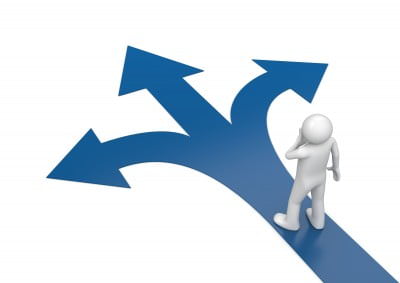Resource Library
Science-Informed Choice in Recovery Mutual Aid
 Never in U.S. history have there existed more choices of support for the resolution of alcohol and other drug (AOD) problems. Today, recovery support groups span secular, spiritual, and religious orientations, with meetings also organized by gender, age, sexual orientation, language preference, profession, and co-occurring conditions, to name just a few. Recent scientific studies and reviews offer a window into these expanding choices and their relative effectiveness.
Never in U.S. history have there existed more choices of support for the resolution of alcohol and other drug (AOD) problems. Today, recovery support groups span secular, spiritual, and religious orientations, with meetings also organized by gender, age, sexual orientation, language preference, profession, and co-occurring conditions, to name just a few. Recent scientific studies and reviews offer a window into these expanding choices and their relative effectiveness.
Individuals who have resolved alcohol and other drug (AOD) problems do so with and without participation in recovery mutual aid groups. Results from the National Recovery Study (Kelly, et al., 2017) found that, of U.S. adults who resolved an AOD problem, 45% did so with the support of a mutual aid organization; 28% did so with the help of professional treatment. Participation in recovery mutual aid and professional treatment is associated with more severe patterns and consequences of substance use.
An updated Cochrane review of the 27 most methodologically rigorous studies of Alcoholics Anonymous and related Twelve-Step Facilitation (TSF) treatment studies concluded: “AA/TSF interventions produce similar benefits to other treatments on all drinking-related outcomes except for continuous abstinence and remission, where AA/TSF is superior.”
White and colleagues (2020), in their review of 158 NA-related studies, concluded: “NA participation is associated with decreased drug use, increased rates of abstinence, improved global (physical, emotional, spiritual) health, enhanced social functioning, increased involvement with mainstream community institutions, and decreased health care costs—effects amplified by intensity and duration of NA participation.”
Kelly and colleagues (2014) examined the comparative responses to Alcoholics Anonymous and Narcotics Anonymous among 279 young adults undergoing treatment for a non-alcohol drug use disorder. The majority of mutual support meetings attended post-treatment were AA rather than NA meetings (due in part to less availability of NA meetings). There were no significant differences in participation rates or positive outcomes achieved between drug dependent patients attending AA or NA. The research team concluded: “contrary to expectations, young adults who identify cannabis, opiates, or stimulants as their preferred substance may, in general, do as well in AA as NA.”
Zemore and colleagues (2018) compared the comparative effectiveness of participation in Women for Sobriety, LifeRing, SMART Recovery, and Twelve-Step groups among individuals with an alcohol use disorder (AUD). “Results tentatively suggest that WFS, LifeRing, and SMART are as effective as 12-step groups for those with AUDs, and that this population has the best odds of success when committing to lifetime total abstinence.”
Tsutsumi and colleagues (2018) compared group retention and transitions in group affiliation among 647 individuals participation in 12-Step, Women for Sobriety, LifeRing, or SMART Recovery groups. Key findings include:
1) changing groups among participants of 12-Step alternatives is common,
2) the most common pattern of change was from a 12-Step alternative to a 12-Step group,
3) those transitioning to a 12-Step group continued to report disliking some aspects of the 12-Step program,
4) changing groups is often a search for greater support rather than a different philosophy of recovery, and
5) changing groups was most common among younger participants and people of color,
The above studies are reflective of a larger body of scientific literature documenting the viability of alternative pathways of long-term addiction recovery. The expansion of pathway choices is worthy of celebration by everyone concerned about the resolution of AOD problems. Collectively, these studies affirm the role recovery mutual aid participation in long-term addiction recovery and inform the growing varieties of recovery experience.
References
Kelly, J. F., Abry, A., Ferri, M., & Humphreys, K. (2020). Alcoholics Anonymous and 12-Step facilitation treatments for alcohol use disorder: A distillation of a 2020 Cochrane Review for clinicians and policy makers. Alcohol and Alcoholism (Oxford, Oxfordshire), June.
Kelly, J. F., Bergman, B., Hoeppner, B., Vilsaint, C., & White, W. L. (2017) Prevalence, pathways, and predictors of recovery from drug and alcohol problems in the United States Population: Implications for practice, research, and policy. Drug and Alcohol Dependence, 181, 162-169.
Kelly, J. F., Greene, M. C., & Bergman, B. C. (2014). Do drug-dependent patients attending Alcoholics Anonymous rather than Narcotics Anonymous do as well? A prospective, lagged, matching analysis. Alcohol and Alcoholism, 49(6), 645-653.
Tsutsumi, S., Timko, C., & Zemore, S. E. (2020). Ambivalent attendees: Transitions in group affiliation among those who choose a 12-step alternative for addiction. Addictive Behaviors, 102, 106143. https://doi.org/10.1016/j.addbeh.2019.106143.
White, W., Galanter, M., Humphreys, K., & Kelly, J. (2020) “We do recover”: Scientific Studies on Narcotics Anonymous. Posted at www.williamwhitepapers.com
